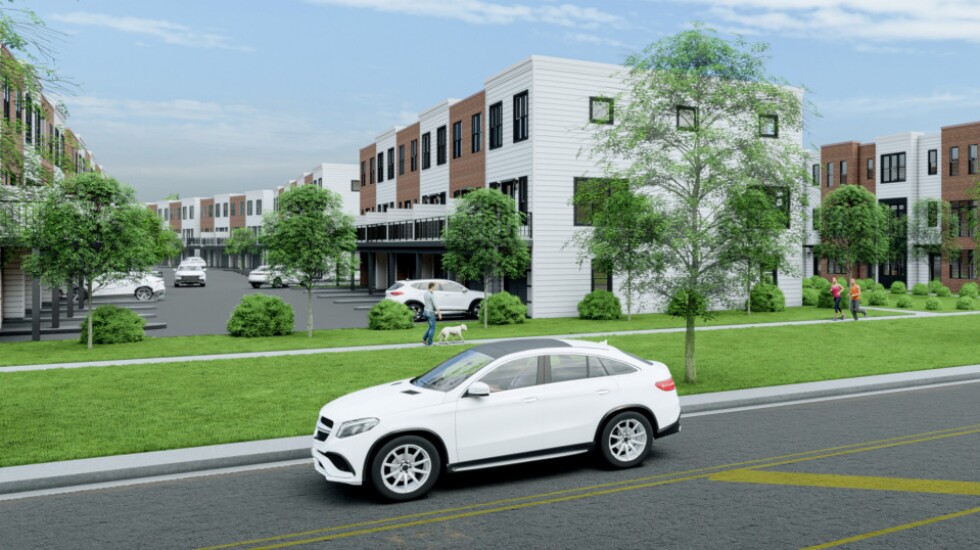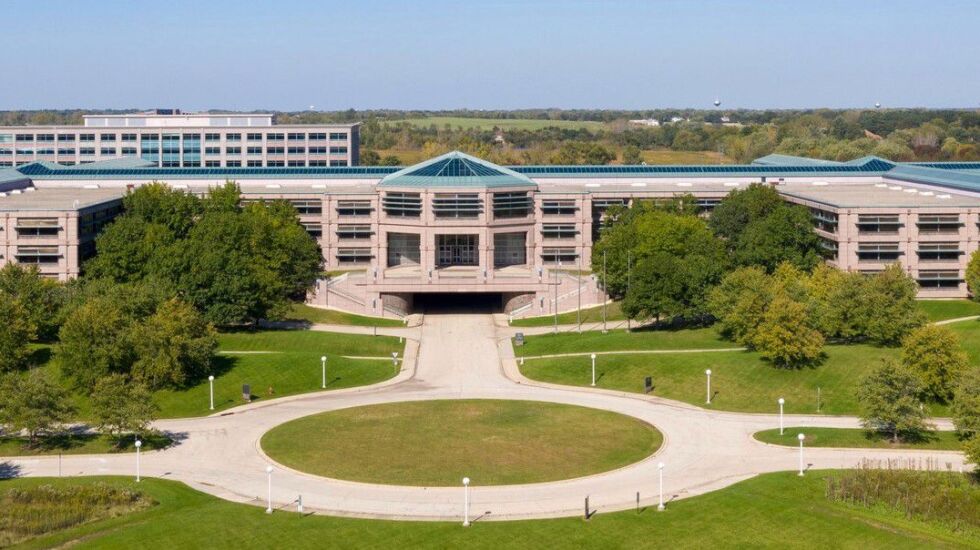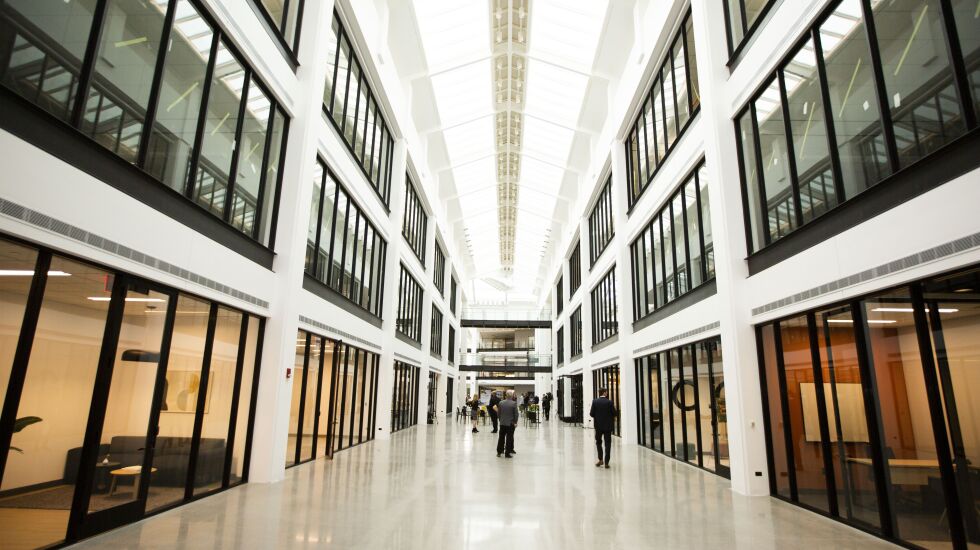
The “metroburb” experiment in Hoffman Estates is moving forward.
It’s a grand vision of suburban living that’s supposed to inject it with a dash of urban variety and conviviality. The “metroburb” term is employed by a company, Inspired by Somerset Development, to describe its efforts to turn a sprawling former AT&T research center into something useful again.
Prominent Chicago architect Dirk Lohan designed the place, which opened in 1990 as the Ameritech Center and became part of AT&T. About 5,000 people used to work there. AT&T eventually decided it didn’t need a former corporate vision of paradise that lolled across 150 acres. It left it behind in 2016.
By 2019, the firm now called Inspired acquired the site at 2000 Center Drive, just off the Jane Addams Tollway, and rechristened it Bell Works Chicagoland in honor of its telephone past. It is reworking the main building, a massive 1.6 million square feet, to accommodate offices, dining and entertainment and has signed about 200,000 square feet of leases, said Jack Aber, Inspired’s chief operating officer. Tenants include waste management firm Heritage-Crystal Clean, Platinum Home Mortgage, apparel company Club Colors and a Fairgrounds coffee and tea café that plans to expand.
The goal is to create something busy but comfortable. “It’s a metropolis in suburbia,” said Aber, who used to specialize in downtown Chicago office leasing. “People come here, they get a little bit of Fulton Market, they get a little of Wacker Drive. It’s just closer to home and with green space,” he said.
Last week, the Village Board in Hoffman Estates authorized another phase for the project. It approved Inspired’s plans to build 164 townhomes in three-story rowhouses separate from the office building. It also approved a general concept for 300 apartments, with details and a final zoning authorization to come later. Since this is the suburbs, each townhome gets a two-car garage.
Ken Gold, vice president of acquisitions and development at Inspired, said he expects the townhome construction will start in late spring, with the first deliveries about a year later. He said pricing should be more than $400,000.
The company hopes permanent residents will add life to the Bell Works property and induce restaurants and other businesses to come in. In a document prepared for village officials, Inspired laid out its goals:
“Taking inspiration from classic neighborhoods such as Chicago’s Lincoln Park and Brooklyn’s Park Slope, Bell Works town homes are a fresh interpretation of warm residential living while layering elements of contemporary urban design,” the company said. “Using a fresh palette of timeless brick, warm neutrals, and industrial-inspired accents, gracious rows of town houses foster a neighborhood of individuality yet authentic community. … Overall, an approach that looks to the best of new urbanism creates an interesting yet cohesive neighborhood that promotes community health and human well-being.”
It sounds like a lot to ask of a real estate project, but the company has a model to follow — a successful redevelopment of another Bells Works property in Holmdel, New Jersey, it transformed into a mixed-use development.
Gold said Inspired isn’t worried about building homes in an inflationary market that’s affecting construction bills and buyers’ costs to obtain a mortgage. “We’re creating a quality product here in the Barrington 220 school district. Interest rates are still historically low. We’d rather be delivering our product sooner than waiting for the market to come to us,” he said.

Aber said that for the office part, Inspired continues to get interest from tenants, especially for what it calls its “ready to wear” turnkey suites for young companies or those that have a “hub and spoke” system of regional offices.
Scott Ohlander, executive vice president at the real estate firm Jones Lang LaSalle, said Bell Works is an attractive property for many users but is encountering a difficult market in the suburbs for office demand. He said that with companies still assessing the effects of the pandemic, the volume of leasing deals is weak and those who enter the market on average want 45% less space than they had before.
“These organizations have had time now to understand what’s driving their success and will perhaps do more with less,” he said. JLL’s market report covering the suburbs at yearend 2022 showed the vacancy rate at 27.9%, slightly higher than the year before. For the first time since 2019, more office space in the suburbs was leased than was emptied in 2022, a sign of slow recovery.
Ohlander said Bell Works faces heavy competition from new or substantially redone space in the suburbs. But it helps that Inspired is trying to build an attractive community around it. “These live-work-play ecosystems are the future of suburban space,” Ohlander said.








